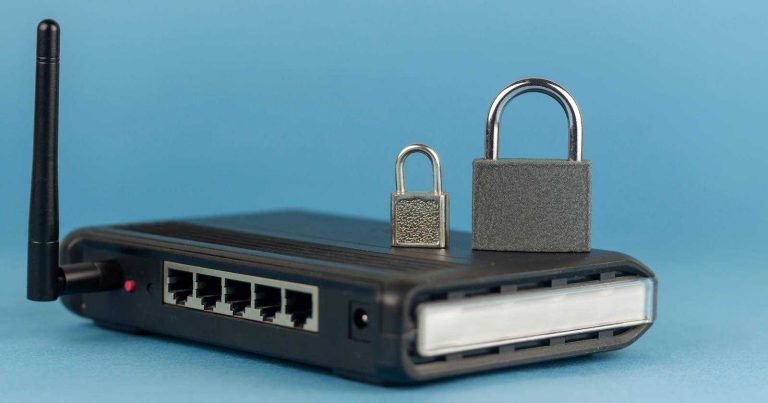Having your WiFi cut out just when you’re mid-conversation can be incredibly frustrating, especially during important video calls. The good news is, most connectivity issues can be fixed with a few simple steps to stabilize your connection. To prevent WiFi from dropping during video calls, restart your router, move closer to your WiFi source, and reduce the number of devices competing for bandwidth. Ensuring your device’s software is up to date and switching to a wired connection if possible can also make a big difference.
WiFi dropping during video calls is a common problem, but it’s often caused by weak signals, interference, or overloaded networks. By optimizing your internet setup, you can enjoy smoother, uninterrupted conversations and improve your overall online experience. Stay tuned for easy tips to keep your WiFi stable and reliable during those crucial calls.
How to Solve WiFi Dropping During Video Calls
Understanding Why WiFi Drops During Video Calls
WiFi dropping during video calls can be frustrating and disruptive. To fix this issue, it is important to understand the main causes behind connection problems. Common reasons include weak WiFi signals, network congestion, outdated hardware, and interference from other electronic devices.
Weak WiFi signals are often caused by long distances between your device and the router. When the signal is weak, data cannot be transmitted effectively, leading to interruptions. Network congestion occurs when multiple devices share the same WiFi band, slowing down your internet speed. Older routers may lack the necessary technology to handle multiple high-bandwidth activities like video streaming.
Interference from other electronic devices such as microwaves, cordless phones, or Bluetooth gadgets can also disrupt your WiFi signal. Physical obstacles like walls or furniture can block WiFi signals, reducing their strength. Another factor is the bandwidth limit set by your Internet Service Provider, which can slow down your connection during peak hours.
Checking Your Internet Speed and Connection Stability
Before troubleshooting, verify that your internet connection is fast and stable. Use online tools like Fast.com or Speedtest.net to measure your current upload and download speeds. A good quality video call generally requires speeds of at least 3 Mbps for standard quality or 5 Mbps for HD calls.
If the speed results are lower than expected, restart your modem and router to refresh your connection. You can also connect your device directly to the router with an Ethernet cable for a more stable connection. This eliminates WiFi issues and helps you determine if the problem is with internet speed or WiFi signal strength.
Check for packet loss or high latency using diagnostic tools or command prompt commands like ping. High ping or packet loss indicates network instability, which can cause video calls to drop. If issues persist, contact your Internet Service Provider to discuss potential network problems or plan upgrades.
Optimizing WiFi Signal Strength
Strong WiFi signals are essential for smooth video calls. To improve signal strength, position your router in a central, open location away from obstructions. Avoid placing the router near metal objects or thick walls that can block signals.
Update your router’s firmware to the latest version. Manufacturers often release updates that improve performance and fix bugs. Reboot your router regularly to maintain optimal operation.
You can also add WiFi extenders or mesh systems to expand coverage in larger homes. These devices help eliminate dead zones and provide a more reliable connection throughout your space.
Reducing Network Congestion and Improving Bandwidth
Network congestion can cause WiFi to drop during high activity periods. To reduce congestion, limit the number of devices connected to your network during important video calls. Pause downloads, streaming, or online gaming activities that consume lots of bandwidth.
Using Quality of Service (QoS) settings on your router allows prioritization of traffic for video calls. This ensures that your device gets the necessary bandwidth during meetings. Consult your router’s manual to enable and configure QoS features.
Switch your WiFi to less congested bands such as 5 GHz if your router supports dual-band operation. The 5 GHz band typically offers faster speeds and less interference compared to the 2.4 GHz band. Remember that 5 GHz has a shorter range, so position your router accordingly.
Upgrading Hardware for Better Performance
Older routers might struggle to handle modern internet needs, especially during HD video calls. Consider upgrading to a newer model that supports higher speeds and multiple streams.
Choose routers that support WiFi 6 or at least WiFi 5 (802.11ac). These standards provide better performance, increased capacity, and lower latency. Select a router with multiple antennas and beamforming technology for better signal direction.
Ensure your devices also have compatible WiFi hardware. Updating device network adapters can improve connectivity. Sometimes, replacing an outdated or malfunctioning device adapter makes a real difference.
Minimizing Interference and External Disruptions
Electromagnetic interference can cause WiFi signals to drop unexpectedly. Keep your router away from electronic devices like microwaves, Bluetooth speakers, and cordless phones that operate on similar frequencies.
Switching your WiFi to a less congested channel can reduce interference. Use network analysis tools like WiFi Analyzer to identify optimal channels. Manually set your router to use these channels for improved stability.
Limit the use of multiple active Bluetooth or wireless devices in the vicinity during video calls. These can compete for bandwidth and cause signal degradation.
Adjusting Router Settings for Optimal Performance
Access your router’s admin panel through a web browser. Change settings such as WiFi channels, bandwidth, and security options to suit your environment.
Enable features like Band Steering, if available, to automatically switch devices between 2.4 GHz and 5 GHz bands for best performance. Turn on the Quality of Service (QoS) feature to prioritize video call traffic.
Disable unused features that might interfere with your connection, such as guest networks or unnecessary network services. Make sure your router’s firmware is always up to date to incorporate security patches and performance improvements.
Implementing Additional Tips for Reliable Video Calls
Use a wired Ethernet connection when possible. This provides a direct, stable link that’s immune to WiFi interference. It is especially helpful for important meetings or presentations.
Keep your device’s software and video conferencing apps up to date. Developers often release updates to fix bugs and optimize performance for better stability.
Close background applications and browser tabs that consume bandwidth and processing power. This frees up resources for your video call software.
Finally, consider using a USB WiFi adapter with higher gain antennas if your device’s built-in WiFi is weak. External adapters can significantly improve signal reception for better call quality.
Summary of Key Troubleshooting Steps
- Test your internet speed and connection stability.
- Position your router centrally and update its firmware.
- Limit device usage during calls and enable QoS settings.
- Upgrade your router and network hardware if needed.
- Reduce interference sources and switch to less congested WiFi channels.
- Use wired connections whenever possible.
By following these steps, you can greatly enhance your WiFi stability and enjoy seamless video calls. Remember, a combination of hardware upgrades, optimal settings, and minimizing interference makes the biggest difference in preventing dropped connections during important meetings.
WiFi disconnects frequently Windows 11 (Easy fix)
Frequently Asked Questions
What steps can I take to improve my WiFi signal during video calls?
To enhance your WiFi signal during video calls, position your router in a central location away from obstructions and electronic interference. Use a wired connection if possible, which provides a more stable internet connection. Additionally, reduce the number of devices using the network simultaneously to prevent bandwidth congestion and ensure a smoother video call experience.
How can I identify if my router is causing WiFi drops during calls?
Check your router’s placement and signal strength by moving closer to it and observing if the connection stabilizes. Restart your router to resolve temporary issues and update its firmware to ensure optimal performance. If problems persist, consider testing your connection with a different router or contacting your internet service provider for support.
Are there specific network settings I should adjust to prevent WiFi disconnections?
Yes, adjusting your network settings can help. Set your WiFi to operate on a less congested channel, often 1, 6, or 11 for 2.4 GHz networks. Enable Quality of Service (QoS) features to prioritize video call traffic. Also, ensure your device’s network drivers are updated and disable unnecessary background applications that consume bandwidth during calls.
What hardware or equipment upgrades can minimize WiFi drops during video meetings?
Upgrading to a modern, dual-band or tri-band router can improve connection stability. Adding a WiFi extender or mesh network can enhance coverage across larger spaces. Using a high-quality Ethernet cable for wired connections offers the most reliable performance during video calls. Keep your equipment updated to ensure compatibility with the latest network standards.
How do external factors like nearby networks affect WiFi connection during video calls?
Nearby WiFi networks can interfere with your connection, especially if they operate on the same channel. To minimize this, change your router’s channel to a less congested one. Also, reduce electronic interference from devices like cordless phones or microwaves in your vicinity. Maintaining a clear line of sight and avoiding thick walls between your device and router can further improve stability.
Final Thoughts
To solve WiFi dropping during video calls, start by checking your internet connection and restarting your router. Ensure your device is close to the WiFi source to improve signal strength. Updating your router’s firmware and selecting a less crowded WiFi channel can also help stabilize your connection. Addressing these factors quickly minimizes disruptions and enhances your video call experience.
I’m passionate about hardware, especially laptops, monitors, and home office gear. I share reviews and practical advice to help readers choose the right devices and get the best performance.




